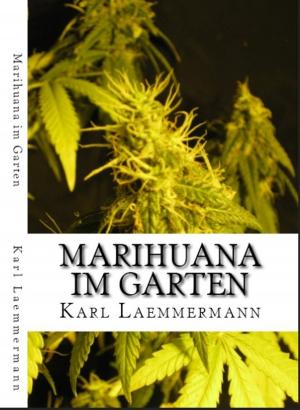Thai cuisine
794 page of delicous Thai food. Enjoy
Nonfiction, Food & Drink, Herbs & Spices, Food Writing| Author: | Karl Laemmermann | ISBN: | 1230000183609 |
| Publisher: | Heinz Duthel | Publication: | September 13, 2013 |
| Imprint: | Language: | English |
| Author: | Karl Laemmermann |
| ISBN: | 1230000183609 |
| Publisher: | Heinz Duthel |
| Publication: | September 13, 2013 |
| Imprint: | |
| Language: | English |
Thai cuisine is the national cuisine of Thailand. Blending elements of several Southeast Asian traditions, Thai cooking places emphasis on lightly prepared dishes with strong aromatic components. The spiciness of Thai cuisine is well known. As with other Asian cuisines, balance, detail and variety are of great significance to Thai chefs. Thai food is known for its balance of three to four fundamental taste senses in each dish or the overall meal: sour, sweet, salty, and bitter.[
Nam phrik are Thai chilli pastes, similar to the Indonesian and Malaysian sambals. Each region has its own special versions. The wording "nam phrik" is used by Thais to describe any
paste containing chilies used for dipping. Curry pastes are normally called phrik kaeng or khrueang kaeng, litt. curry ingredients) but some people also use the word nam phrik to designate a curry paste. Red curry paste, for instance, could be called phrik kaeng phet or khrueang kaeng phet in Thai, but also nam phrik kaeng phet. Both nam phrik and phrik kaeng are prepared by crushing together chillies with various ingredients such as garlic and shrimp paste using a mortar and pestle.
Some nam phrik are served as a dip with vegetables such as Ingredients for green curry cucumbers, cabbage and yard-long beans, either raw or blanched. One such paste is nam phrik num, a paste of pounded fresh green chilies, shallots, garlic and coriander leaves. The sweet roasted chili paste called nam phrik phao is often used as an ingredient in Tom yam or when frying meat or seafood, and it is also popular as a spicy "jam" on bread. The dry nam phrik kung, made with pounded dried prawns (kung haeng, Thai: กุ้งแห้ง), is often eaten with rice and a few slices of cucumber.
Rice is a staple grain of Thai cuisine, as in most Asian cuisines. The highly prized, sweet-smelling jasmine rice is indigenous to Thailand. This naturally aromatic long-grained rice grows in abundance in the verdant patchwork of paddy fields that blanket Thailand's central plains. Steamed rice is accompanied by highly aromatic curries, stir-fries and other dishes, sometimes incorporating large quantities of chili peppers, lime juice and lemongrass/maenglak. Curries, stir-fries and others may be poured onto the rice creating a single dish called khao rat kaeng (Thai: ข้าวราดแกง), a popular meal when time is limited. Sticky rice (khao niao) is a unique variety of rice that contains an unusual balance of the starches present in all rice, causing it to cook Khanom chin, freshly made Thai rice noodles up to a sticky texture. Sticky rice, not jasmine rice, is the staple food in the local cuisines of Northern Thailand and of Isan (Northeastern Thailand), both regions of Thailand directly adjacent to Laos with which they share this, and many other cultural traits.
Thai cuisine is the national cuisine of Thailand. Blending elements of several Southeast Asian traditions, Thai cooking places emphasis on lightly prepared dishes with strong aromatic components. The spiciness of Thai cuisine is well known. As with other Asian cuisines, balance, detail and variety are of great significance to Thai chefs. Thai food is known for its balance of three to four fundamental taste senses in each dish or the overall meal: sour, sweet, salty, and bitter.[
Nam phrik are Thai chilli pastes, similar to the Indonesian and Malaysian sambals. Each region has its own special versions. The wording "nam phrik" is used by Thais to describe any
paste containing chilies used for dipping. Curry pastes are normally called phrik kaeng or khrueang kaeng, litt. curry ingredients) but some people also use the word nam phrik to designate a curry paste. Red curry paste, for instance, could be called phrik kaeng phet or khrueang kaeng phet in Thai, but also nam phrik kaeng phet. Both nam phrik and phrik kaeng are prepared by crushing together chillies with various ingredients such as garlic and shrimp paste using a mortar and pestle.
Some nam phrik are served as a dip with vegetables such as Ingredients for green curry cucumbers, cabbage and yard-long beans, either raw or blanched. One such paste is nam phrik num, a paste of pounded fresh green chilies, shallots, garlic and coriander leaves. The sweet roasted chili paste called nam phrik phao is often used as an ingredient in Tom yam or when frying meat or seafood, and it is also popular as a spicy "jam" on bread. The dry nam phrik kung, made with pounded dried prawns (kung haeng, Thai: กุ้งแห้ง), is often eaten with rice and a few slices of cucumber.
Rice is a staple grain of Thai cuisine, as in most Asian cuisines. The highly prized, sweet-smelling jasmine rice is indigenous to Thailand. This naturally aromatic long-grained rice grows in abundance in the verdant patchwork of paddy fields that blanket Thailand's central plains. Steamed rice is accompanied by highly aromatic curries, stir-fries and other dishes, sometimes incorporating large quantities of chili peppers, lime juice and lemongrass/maenglak. Curries, stir-fries and others may be poured onto the rice creating a single dish called khao rat kaeng (Thai: ข้าวราดแกง), a popular meal when time is limited. Sticky rice (khao niao) is a unique variety of rice that contains an unusual balance of the starches present in all rice, causing it to cook Khanom chin, freshly made Thai rice noodles up to a sticky texture. Sticky rice, not jasmine rice, is the staple food in the local cuisines of Northern Thailand and of Isan (Northeastern Thailand), both regions of Thailand directly adjacent to Laos with which they share this, and many other cultural traits.















